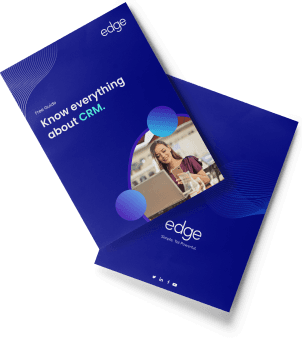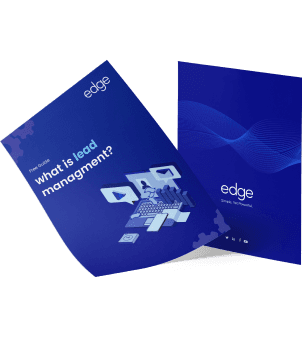Table of Content
1. Introduction
2. The Foundation of Sales Qualification
3. Qualifying Leads Effectively
4. Leveraging Technology for Sales Qualification
5. Collaborating with Marketing for Improved Sales Qualification
6. Continuous Improvement and Optimization
7. Conclusion
1. Introduction
Establishing if a lead or prospect is an ideal match for your product or service is known as sales qualification. This evaluation occurs during sales calls and is critical in identifying whether customers will remain long-term.
Salespeople use an ideal customer profile to determine whether or not a prospect is a good fit. The salesperson will not close the deal with an unsuitable lead. It is a practical sales qualification that makes revenue growth and maximizes sales team efficiency.
Understanding the customer is the first step in the sales qualifying process. One of the most critical pieces of data you can collect from a potential customer is their reason for wanting to buy your goods. Serious leads aren't shopping around for a solution because they have money to burn; their company is probably experiencing some problem that needs fixing.
This is crucial to a salesperson's success but can also be challenging. Qualifying is so complicated that 22 percent of salespeople believe it's the most challenging part of their job. The sales qualification process can be a source of stress and confusion, but with the correct questions, you can minimize both.
So let's see the top 5 actionable strategies from qualifying leads, sales opportunity assessment, and sales discovery process to improve sales qualification to close deals more effectively.
2. The Foundation of Sales Qualification
Simply put, sales organizations rely on sales qualification because it increases close rates. Pursuing leads that aren't a suitable fit is risky without the proper sales credentials. They may be dealing with organizational or financial restrictions that are incompatible with one another. By qualifying sales leads, you can focus your efforts on the ones with the highest potential to become paying customers.
Thus, Making an ICP is the first step in the sales qualifying process. In other words, it's all about pinpointing the specific demographic of buyers who will benefit most from your offering.
Say, for example, that you provide a SaaS software product for managing warehouse and inventory processes for businesses. Your target audience may consist of companies that stock large quantities of goods and have multiple sources of supply.
It's helpful to create buyer personas within an ICP that characterize critical stakeholders at target companies. Those in this category have the knowledge and the authority to resolve purchasing issues for their company.
You may wonder how you identify a buyer's persona. What is it? Let me explain. A buyer persona is a fictional representation of a typical consumer created from market research and actual purchases. Having a specific buyer persona on hand can help you determine if the individual you are engaging with is a qualified prospect as you move through the sales qualification process. An effective questionnaire is a must for such a process.
Consider your ideal customer's answers to each of the sales qualifying questions. Asking qualified questions is an integral aspect of any successful sales strategy. You can use these questions to determine if you can actually help your prospect and if prolonging the conversation is worth it for both of you. Each set of qualifying questions should be unique and well-thought-out. Different prospects will have varied answers, but you may want to eliminate them if their responses don't align with your ideal customer profile.
It takes input from the sales, marketing, and R&D departments to establish an ICP. All divisions need to work together to create an ICP. The work spent is worthwhile because the final product speeds sales qualification.
3. Qualifying Leads Effectively
It would be best to have your leads go through lead qualification for the sales opportunity assessment and discovery process. Your marketing, sales, acquisition, and product teams will all have contributed to the initial pool of leads that will be qualified. When working with a smaller group, online form submissions may make up this pool of leads.
Establish standards for sales leads before sending them through the qualification process. This method filters out prospects less likely to become actual investors.
Commonly used criteria for qualification include:
Business budget plan
The authority responsible for buying
Need for a new solution rollout
Compatible with the existing framework of the business
For example, think of an urgent and authoritative sales lead. This potential client needs more funds to implement your solution. They may be enthusiastic about your offer but need help to afford it. It would be best if you focused your sales efforts elsewhere.
Thus, we must sort them into good leads and bad ones. After leads have been qualified, they are fed into the sales pipeline. Leads who do not meet the criteria are put into a nurturing sequence, hoping they will eventually get interested in the product and make a purchase.
To assess lead quality, let's examine some of the lead qualification frameworks, such as BANT (Budget, Authority, Need, Timeline) and CHAMP (Challenges, Authority, Money, Prioritization).
- BANT Qualification Guidelines
BANT (Budget, Authority, Need, Timeline) is a tried-and-true sales qualification framework used by businesses of all sizes and industries. BANT, created by IBM, is a comprehensive framework for vetting opportunities and the parties involved.
The four pieces of data that BANT is trying to collect are as follows:
Budget - Is the possible customer financially stable?
Authority - Do they have the authority to make a purchase when you approach them?
Need - Is the prospect experiencing a problem with their business that you can help them with?
Timeline - When is the customer ready to make a purchase?
- CHAMP framework
Similar to ANUM, but with Challenges given higher priority than Authority in CHAMP(Challenges, Authority, Money, and Prioritization) lead qualification module. In CHAMP's view, authority is a call to action rather than an impediment.
A lower-level employee is unlikely to be the decision-maker, even if they are the one who answers your initial inquiry. Don't hang up the phone just yet. To find the right person to contact next, you should ask questions that reveal the company's organizational structure. Upon successful conversation, you will be able to make a potential buyer.
- MEDDIC
Jack Napoli developed MEDDIC (Metrics, Economic Buyer, Decision Criteria, Decision Process, Identity Pain, Champion) while working for PTC, a software development firm.
To succeed with MEDDIC, salespeople need to be familiar with every step of the buying process at their target organization, regardless of whether or not an internal champion plays a role.
If your organization sells a product that demands a drastic change in consumer behavior or your average sale price is extremely high, you should consider using MEDDIC as a qualification framework. Accurate pipeline management requires knowledge of a prospect's buying process, their motivation for purchasing, and the internal advocates who will advocate for you.
Pro Tip: Asking qualified questions is integral to any successful sales strategy. You can use these questions to determine if you can help your prospect and if prolonging the conversation is worth it for both of you. Each set of qualifying questions should be unique and well-thought-out.
4. Leveraging Technology for Sales Qualification
A lot of information is needed for adequate sales qualifications. You'll need specifics on sales and research, as well as on prospect and customer activity and purchases. Even the most experienced teams can be overwhelmed by a lot of pressure.
Therefore, investing in customer relationship management (CRM) solutions that record this information is worthwhile. The marketing and sales departments may now rely on a unified database.
Your team can monitor new client behavior patterns to inform more strategic sales planning. Several sales intelligence tools help in automating lead qualification and enriching prospect data.
CRM systems and lead scoring models offer several benefits for prioritizing leads. They enable businesses to track and analyze customer interactions, providing valuable insights into their preferences and behaviors. This data helps identify engaged leads, allowing sales teams to focus their efforts on prospects most likely to convert.
Lead scoring models assess the fit of leads based on demographic, firmographic, and behavioral factors, ensuring resources are allocated effectively. By prioritizing high-engagement leads with a firm fit, companies can maximize their sales efforts, increase conversion rates, and improve overall customer satisfaction, enhancing profitability and growth.
Thus, I strongly recommend exploring integrated sales tools into the sales workflow for improved efficiencies, such as BANT, CHAMP, MEDDIC, or ANUM. They will not just help you characterize your leads better but will also help you grow more in converting leads into customers.
5. Collaborating with Marketing for Improved Sales Qualification
Lead qualifying is most effective when the sales and marketing departments work together. A cohesive strategy for creating lead-qualifying criteria can be achieved through open channels of communication that encourage collaboration and shared goals. By collaborating on these criteria, the two groups may more precisely characterize ideal customers and focus their efforts on winning them over.
When marketing and sales departments can effectively communicate, both parties benefit. Sales teams can better comprehend marketing efforts and their intended audience. As a result of this agreement, thorough lead qualification standards can be developed, considering both fit and engagement elements.
Lead handoff techniques should be adopted to guarantee continuity of service for customers. Consistent meetings between sales and marketing departments can improve feedback loops and information exchange. The sales and marketing departments can benefit from exchanging information regarding lead quality and qualification requirements through clear communication channels. To guarantee a seamless transition from marketing to sales, it's essential to implement a standardized lead handoff procedure that uses CRM systems and shared documentation.
When sales and marketing work together, lead qualification improves, and customers receive consistent messaging and tailored interactions, everyone wins. Ultimately, this synergy drives higher conversion rates, improves customer satisfaction, and contributes to business growth.
6. Continuous Improvement and Optimization
The sales qualifying process is iterative and needs constant fine-tuning. Lead qualifying standards must be modified as the market and customer dynamics change. Sales and marketing teams must have consistent feedback loops to share information, assess the efficacy of qualification criteria, and make any necessary improvements.
Businesses can adapt to shifting market conditions and client preferences by constantly evaluating and improving their qualifying procedures. This iterative method enhances the quality of lead qualification, boosts conversion rates, and accelerates the efficiency of the sales process as a whole.
By tracking and analyzing key sales qualification metrics such as conversion rates, win rates, and sales velocity, you can tailor your sales qualification procedures to each industry and maintain a library of tailored sales presentations.
Lead generation, lead qualifying, pipeline velocity, win rate, deal size, and customer retention are just some essential metrics you need to track. The following are some guidelines for effectively using data insights to pinpoint sales process bottlenecks:
Enhance your understanding of data by drilling down into descriptive analytics and KPIs.
KPIs, OKRs, and other key outcome measurements give an objective framework for making decisions based on data.
Use value stream mapping to analyze procedures and spot problems, inefficiencies, and enhancement prospects.
Collecting and analyzing sales data can yield valuable insights, such as identifying bottlenecks, refining qualifying criteria, and optimizing the sales qualification process.
7. Conclusion
In a nutshell, a business must have a strong foundation for sales qualification. It should effectively qualify leads by leveraging technology and tools such as CRM systems. A company should link sales and marketing teams to improve sales quality closely. And lastly, any business module should continuously strive for improvement and optimization.
Qualifying prospects correctly is crucial to closing sales. Your company's success or failure hinges on your ability to identify ideal customers. Prospects that convert to buyers are invaluable because they bring in money, spread the news, bring in new buyers, and give you opportunities to upsell and cross-sell.
Now that you have read techniques for improving sales qualifications, the only thing left is to start implementing. Only action brings changes; with the help of discussed strategies, you are only a step away from quality and rewarding sales.
Stay tuned for future updates and to know more about our additional resources on sales qualification. Please share your experiences and personal difficulties below in the comments section; we are eager to hear your story. Your insights are helpful to us and other readers.
If you need personalized guidance or consulting, contact us in the mentioned detail, and we will revert shortly.
Suggested Reading
Top Professional Voicemail Greetings
What is Sales Prospecting?
Importance of Communication Skills for a Salesperson
Best Ways to build more trust in customer













